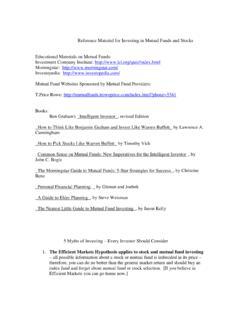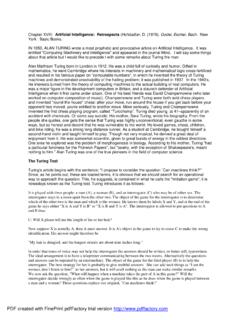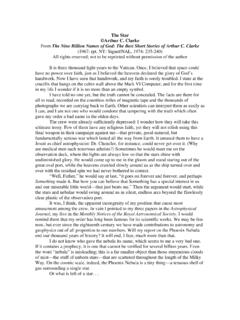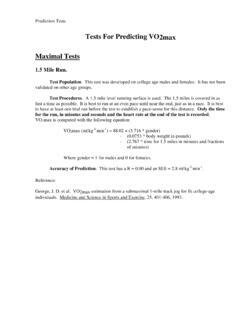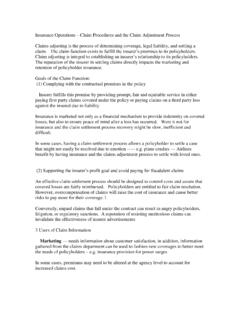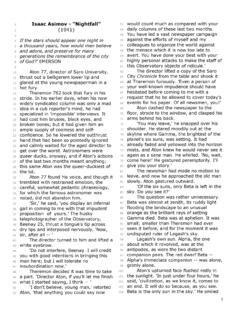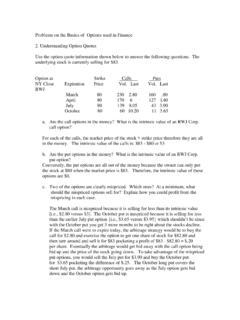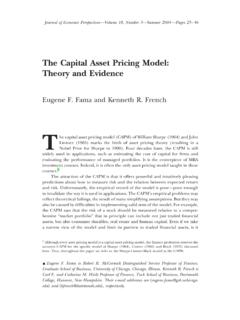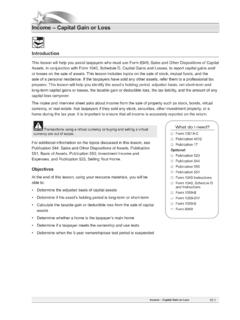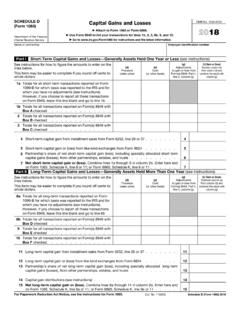Transcription of Problems Relating to Capital Structure and Leverage 1 ...
1 Problems Relating to Capital Structure and Leverage 1. EBIT and Leverage Money Inc., has no debt outstanding and a total market value of $150,000. Earnings before interest and taxes [EBIT] are projected to be $14,000 if economic conditions are normal. If there is a strong expansion in the economy, then EBIT will be 30% higher. If there is a recession, then EBIT will be 60% lower. Money is considering a $60,000 debt issue with a 5% interest rate. The proceeds will be used to repurchase shares of stock. There are currently 2,500 shares outstanding. Ignore taxes for this problem.
2 A. Calculate earnings per share [EPS] under each of the three economic scenarios before any debt is issued. Also calculate the % changes in EPS when the economy expands or enters a recession. If you ignore taxes in this problem and there is no debt outstanding: Under Normal Economic Conditions EPS = EBIT/shares outstanding = $14,000/2,500 = $ Under Expansionary Times: EPS = [EBIT x ]/shares outstanding = $14,000( )/2,500 $18,200/2,500 = $ Under a Recession: EPS = [EBIT x ( )]/shares outstanding =$14,000(.)
3 40)/2,500 $5,600/2,500 = $ % EPS going from Normal Expansion: ($ - $ )/$ = .30 or 30% % EPS going from Normal Recession: ($ - $ )/$ = or -60% b. Repeat part (a) assuming that Money goes through with recapitalization. What do you observe? If the market value of the firm is $150,000 with 2,500 shares outstanding, then the value of one share of stock is: $150,000/2,500 = $60/share. If $60,000 worth of debt is raised to retire stock, then you will be buying back $60,000/$60 or 1,000 shares.
4 So, after recapitalization there will be 2,500 -1,000 or 1,500 shares outstanding. EBIT will be reduced by the amount of the interest on $60,000 in debt or $60,000 x .05 = $3,000. Recession Normal Expansion EBIT $5,600 $14,000 $18,200 Less: Interest 3,000 3,000 3,000 EBT=NI $2,600 $11,000 $15,200 EPS $ $ $ Normal Conditions: EPS = $11,000/1,500 = $ Expansionary Times.
5 EPS = $15,200/1,500 = $ % EPS going from Normal Expansion: ($ - $ )/$ = .38199 or Normal Conditions: EPS = $11,000/1,500 = $ Recession: EPS = $2,600/1,500 = $ % EPS going from Normal Recession: ($ - $ )/$ = . or The use of debt to buy back shares will cause a dramatic increase in EPS should the economy stay normal or move to an expansionary state. On the other hand, if the economy goes into a recession the Leverage will cause EPS to decline by a much greater % than the increase due to expansion.
6 The firm would also need to consider the market price of its stock [whether it is on sale], the prospects for earnings even in the event of a recession [ , does the firm produce a product or service that everyone needs [somewhat inelastic good/service]], and whether the financing rate is attractive [spread between the interest rate on debt and the return on equity]. ROE and Leverage 3. Suppose the company in Problem 1 has a market-to-book ratio of a. Calculate return on equity [ROE], under each of the 3 economic scenarios before any debt is issued.
7 Also calculate the % in ROE for economic expansion and recession, assuming no taxes. Since the firm has a market-to-book value of , the total equity of the firm is equal to the market value of equity. ROE = NI/E = NI/$150,000 The ROE for each state of the economy under the current Capital Structure and no taxes is: Recession Normal Expansion ROE $5,600/$150,000 $14,000/$150,000 $18,200/$150,000 ROE .0373 .0933.
8 1213 Sensitivity Analysis: Normal to Recession % ROE = (.0373 - .0933)/.0933 = or -60% Sensitivity Analysis: Normal to Expansion % ROE = (.1213 - .0933)/.0933 = .3001 or 30% b. Repeat part (a) assuming the firm goes through with the recapitalization. Assuming no taxes, interest on debt of 5%. If the firm goes forward with recapitalization, the new equity value will be: Equity = $150,000 - $60,000 or $90,000 [due to reduction of shares outstanding] So, the ROE for each state of the economy is: ROE = NI/$90,000 Recession Normal Expansion ROE $2,600/$90,000 $11,000/$90,000 $15,200/$90,000 ROE.
9 0289 .1222 .1689 Sensitivity Analysis: Normal to Recession % ROE = (.0289 - .1222)/.1222 = or Sensitivity Analysis: Normal to Expansion % ROE = (.1689 - .1222)/.1222 = .3822 or c. Repeat parts (a) and (b) of this problem considering the fact that the Company has a 35% tax rate. Recession Normal Expansion EBIT $ 5,600 $ 14,000 $ 18,200 Less: Interest 3,000 3,000 3,000 EBT $ 2,600 $ 11,000 $ 15,200 Less: Taxes @ 35% 910 3,850 5,320 NI $ 1,690 $ 7,150 $ 9,880 ROE.
10 01877 .07944 .10977 Sensitivity Analysis: Normal to Recession % ROE = (.01877 - ..07944)/.07944 = or Sensitivity Analysis: Normal to Expansion % ROE = (.10977 - .07944)/.07944 = .3818 or The % ROE is the same as the % EPS, and also the % ROE remains the same regardless of taxes [ , the tax rate has an equal impact on NI for all states of the economy]. 12. Calculating WACC Weston Industries has a debt-equity ratio of Its WACC is 12%, and its cost of debt is 12%. The corporate tax rate is 35%. a. What is Weston s cost of equity Capital .

